Best AI Chatbots in 2025 (and How to Create Your Own)
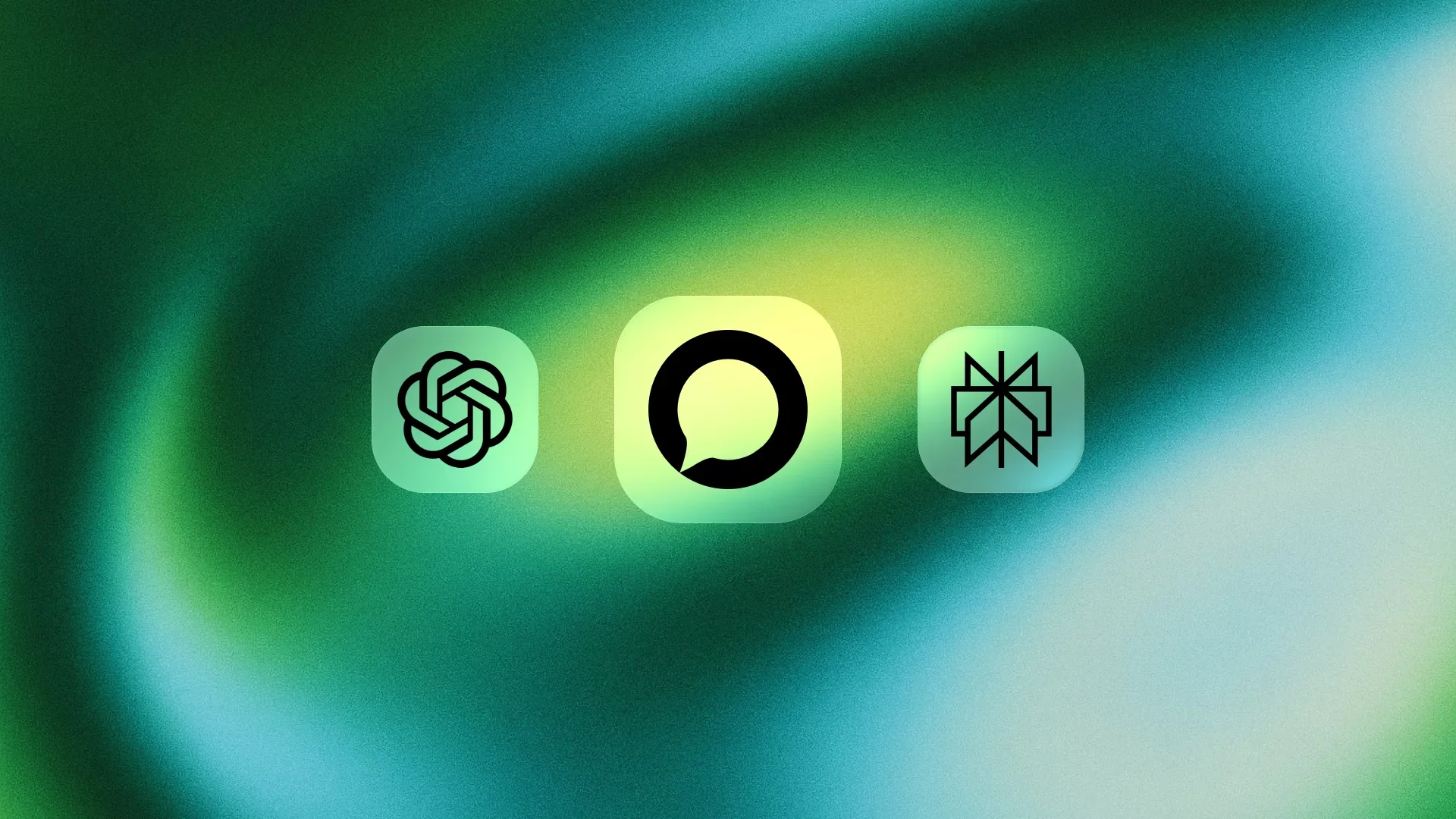
AI chatbots have gone from futuristic novelties to essential everyday tools. In 2023, ChatGPT changed how millions of people work and create. Fast forward to 2025 — and now there’s a whole ecosystem of capable alternatives, each specializing in something unique: reasoning, design, business automation, or even personal branding.
In this guide, we’ll explore the best AI chatbots in 2025, how they compare, and what sets each apart. You’ll also learn how to build your own branded AI chatbot (and even monetize it) using tools like Outchat.
The Best AI Chatbots at a Glance
Chatbot | Best for | Key Features |
|---|---|---|
ChatGPT | General use & creativity | Multimodal, fast, highly capable |
Claude | Writing, research, empathy | Long context window, creative tone |
Google Gemini | Productivity & research | Deep Google Workspace integration |
Microsoft Copilot | Business users | Embedded in Word, Excel, PowerPoint |
Poe | Trying multiple AI models | Choose GPT, Claude, Mistral & more |
Outchat | Creators & businesses | Build, brand & monetize your own chatbot |
Perplexity | Web research & fact-checking | Live search + source citations |
Le Chat Mistral | Simplicity & open-source | Concise, free, easy to use |
How AI Chatbots Work
AI chatbots take the text you type (your prompt) and pass it to an AI model trained on massive datasets. That model predicts the most relevant or likely response, which the app then formats into a chat interface.
Behind the scenes:
The app handles history, memory, and tools (like web search or image generation).
The model handles the logic, reasoning, and text generation.
Some apps use multiple models — for instance, GPT-4o for reasoning and DALL·E 3 for images.
This separation explains why two apps using the same model (like GPT-4) can feel completely different: it’s all in the design, tuning, and features on top.
LLMs vs Reasoning Models
One of the biggest leaps in 2025 has been the introduction of reasoning models, such as OpenAI’s o3 and DeepSeek R1.
LLMs (Large Language Models) predict words based on context, making them great at writing, summarizing, and generating ideas.
Reasoning models simulate step-by-step logic. They can break down math problems, code efficiently, and “think aloud” while solving tasks.
In short: LLMs are great talkers; reasoning models are better thinkers. Most top chatbots in 2025 blend both — letting users switch depending on the task.
How We Selected the Best AI Chatbots
When evaluating the tools below, we focused on five key factors:
Model quality — Accuracy, reasoning ability, speed, and creative flexibility.
User experience — Clarity, usability, and natural conversation flow.
Features — Web search, file uploads, memory, and integrations.
Customization — Branding, settings, or developer controls.
Pricing & accessibility — Value for individuals, teams, and creators.
Let’s explore the leaders shaping AI conversation this year.
1. ChatGPT
Best for: General-purpose use, creativity, data analysis, and everyday productivity
Model: OpenAI GPT-4o, o1, o3, and DALL·E 3
Price: Free (GPT-4o available on all plans), Plus $20/month
ChatGPT remains the standard for conversational AI — and with the 2025 updates, it’s faster, smarter, and far more capable.
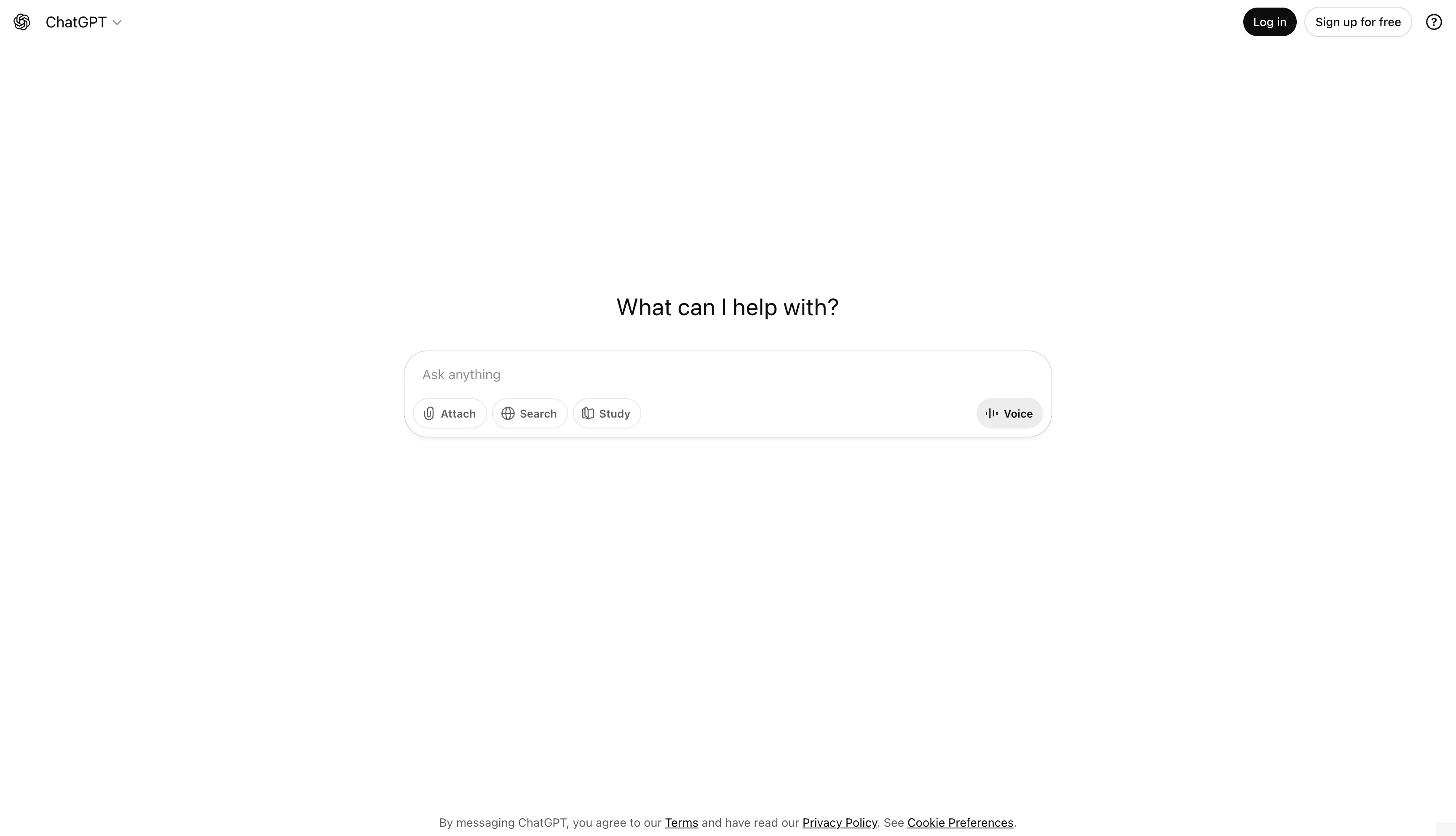
You can upload documents, chat using voice, generate images, analyze data, and even create your own custom GPTs. Its new Projects feature keeps context and files grouped per topic, while Canvas allows collaborative writing and editing directly in chat.
Pros:
Multimodal (text, images, audio, and code)
Reliable across disciplines
Vast plugin ecosystem
Cons:
Advanced features behind paid tiers
Limited branding/customization for creators
If you want the most robust, general AI experience — ChatGPT is still the benchmark.
2. Claude
Best for: Long-form writing, content creation, document analysis
Model: Claude 3.7 (Opus, Sonnet, Haiku)
Price: Free & Pro $20/month
Anthropic’s Claude stands out for its empathetic tone and impressive ability to handle long documents — up to 150,000 words per chat. It’s a dream for researchers, writers, and teams collaborating on big ideas.
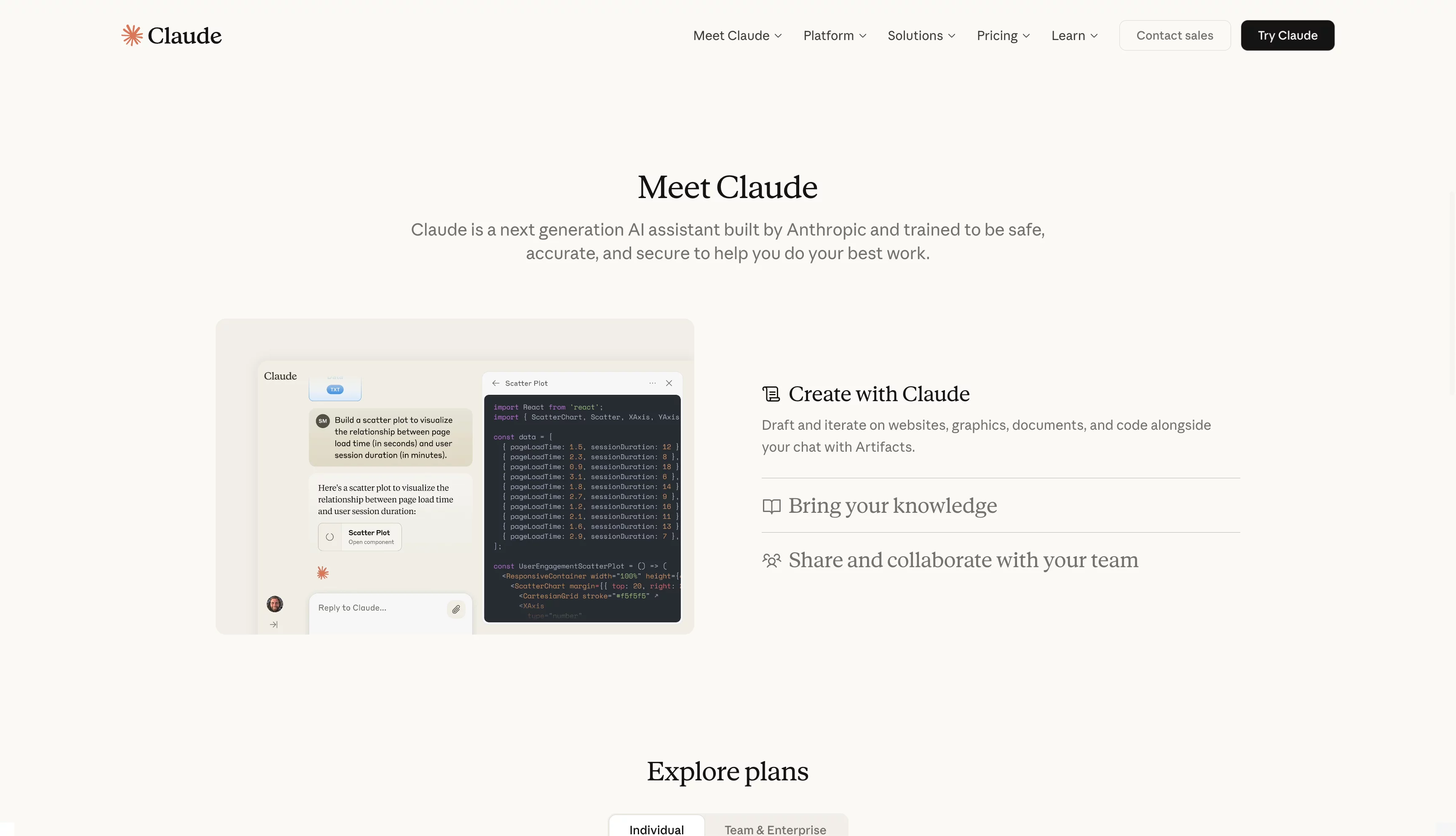
Its Artifacts feature lets users generate dashboards, planners, and even games directly inside the chat — blurring the line between chatbot and interactive builder.
Pros:
Huge context window
Creative, human-like replies
Strong privacy standards
Cons:
Daily message limits on free plan
Slightly slower than ChatGPT in reasoning
3. Google Gemini
Best for: Productivity and real-time research
Model: Gemini 2 Pro and Imagen 3
Price: Free; Advanced plan via Google One
If you live in Google Workspace, Gemini is your AI co-pilot. It integrates across Gmail, Docs, Sheets, Maps, and YouTube, letting you summarize files, search Drive, plan trips, and even analyze data directly in chat.
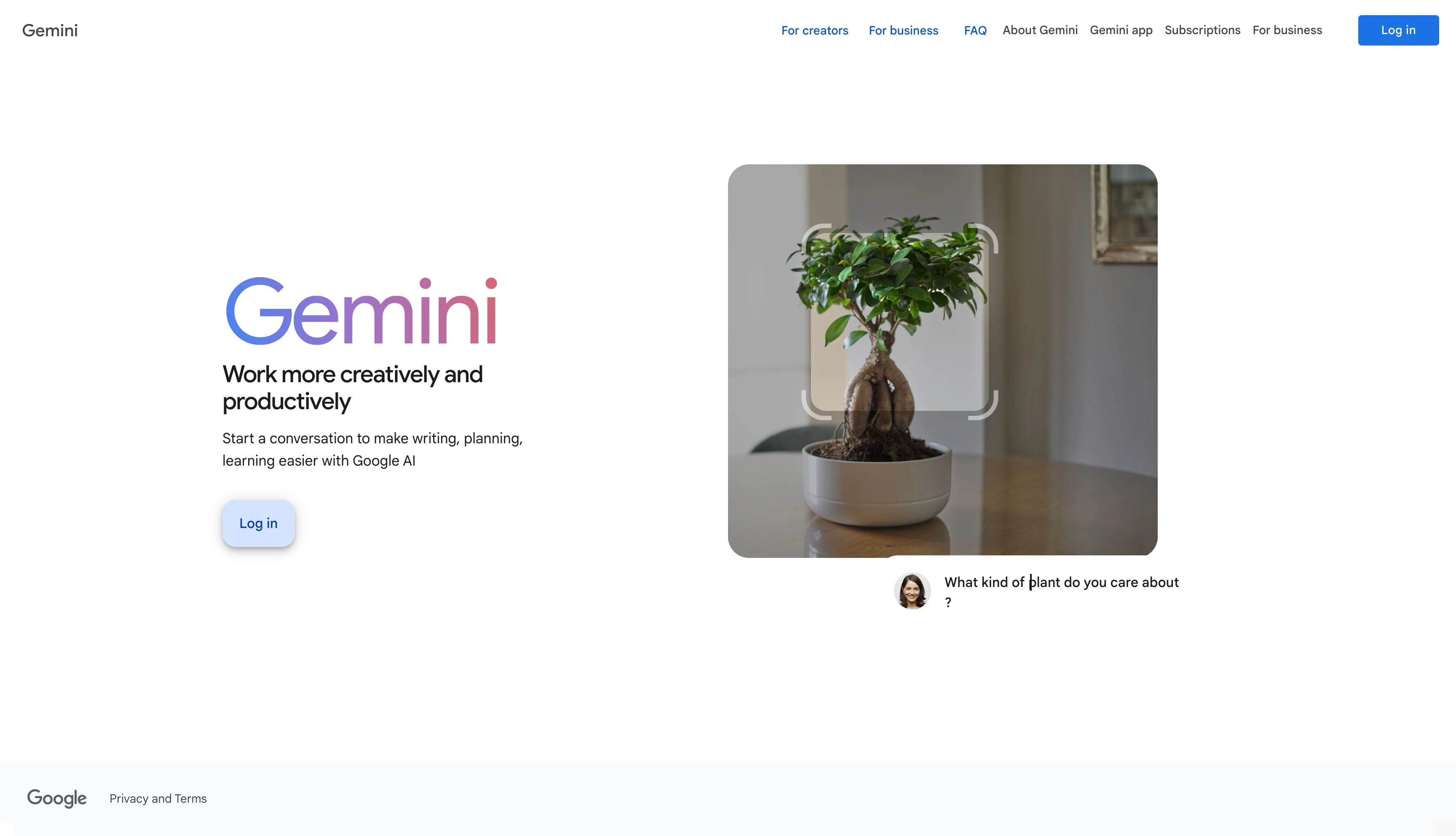
Gemini’s Gems (its version of custom GPTs) let users create specialized assistants for specific tasks, while its deep search connections make it ideal for real-time queries.
Pros:
Tight integration with Google apps
Excellent for summarizing large amounts of data
Long memory and context awareness
Cons:
Occasional factual inconsistencies
Google account required
4. Microsoft Copilot
Best for: Office & business automation
Model: OpenAI GPT models
Price: Free basic tier, or included in Microsoft 365 Copilot plan
Copilot brings generative AI into the apps many professionals use daily — Word, Excel, PowerPoint, and Outlook. It can rewrite emails, summarize meetings, or turn bullet points into full slides.
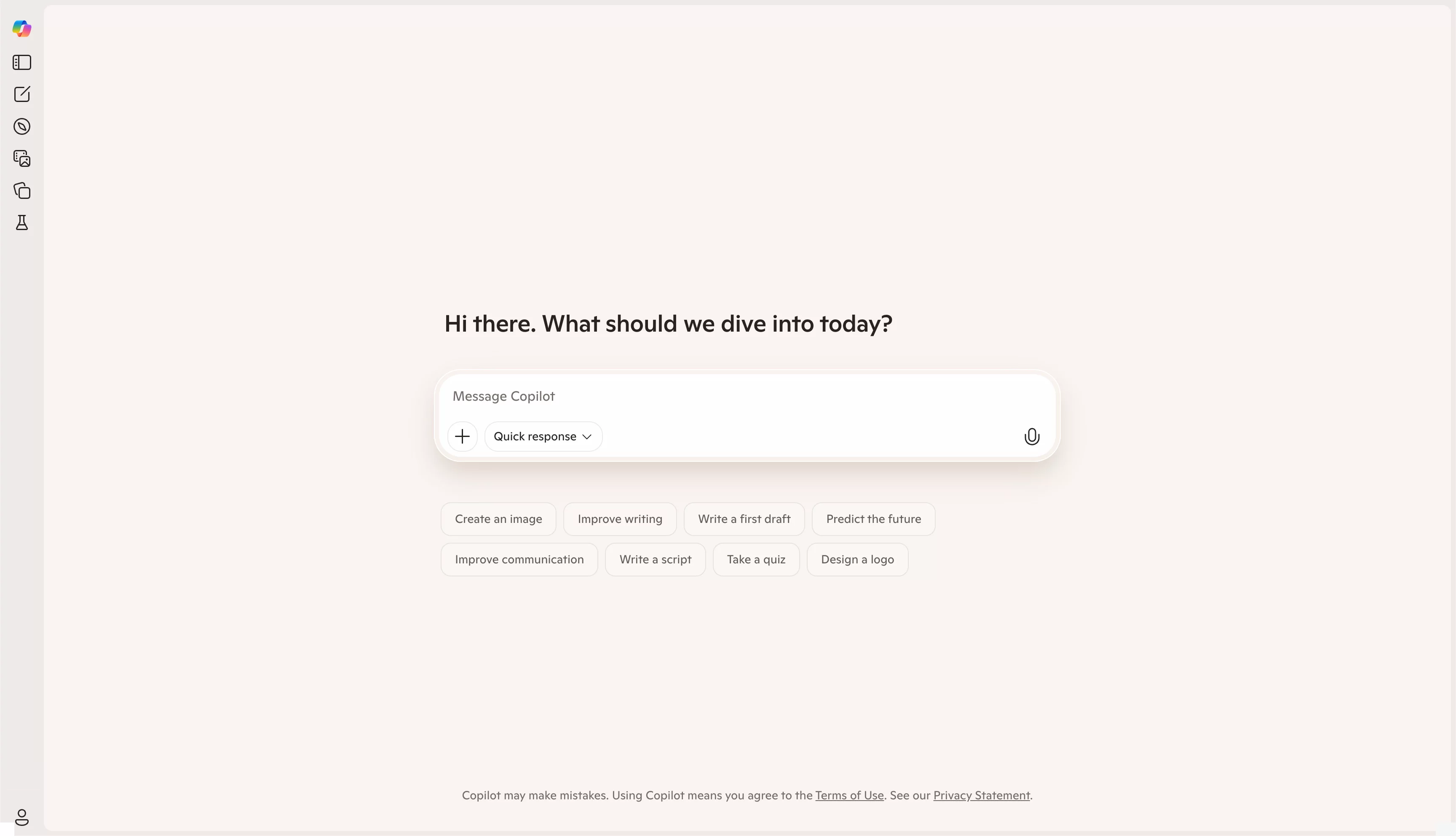
It’s not flashy, but it’s dependable and deeply embedded into Microsoft’s productivity ecosystem.
Pros:
Seamless for corporate workflows
Enterprise-level security
Real-time integration with Office tools
Cons:
Less creative flexibility
Best suited for paid Microsoft users
5. Poe
Best for: Comparing models and experimenting
Models: GPT-4o, Claude, Gemini, Mistral, Llama 3, and more
Price: Free with optional credits
Poe is the “app store” for AI models. You can chat with multiple AIs side-by-side — switching between GPT, Claude, Mistral, or DeepSeek. It’s perfect for testing tone and accuracy differences.
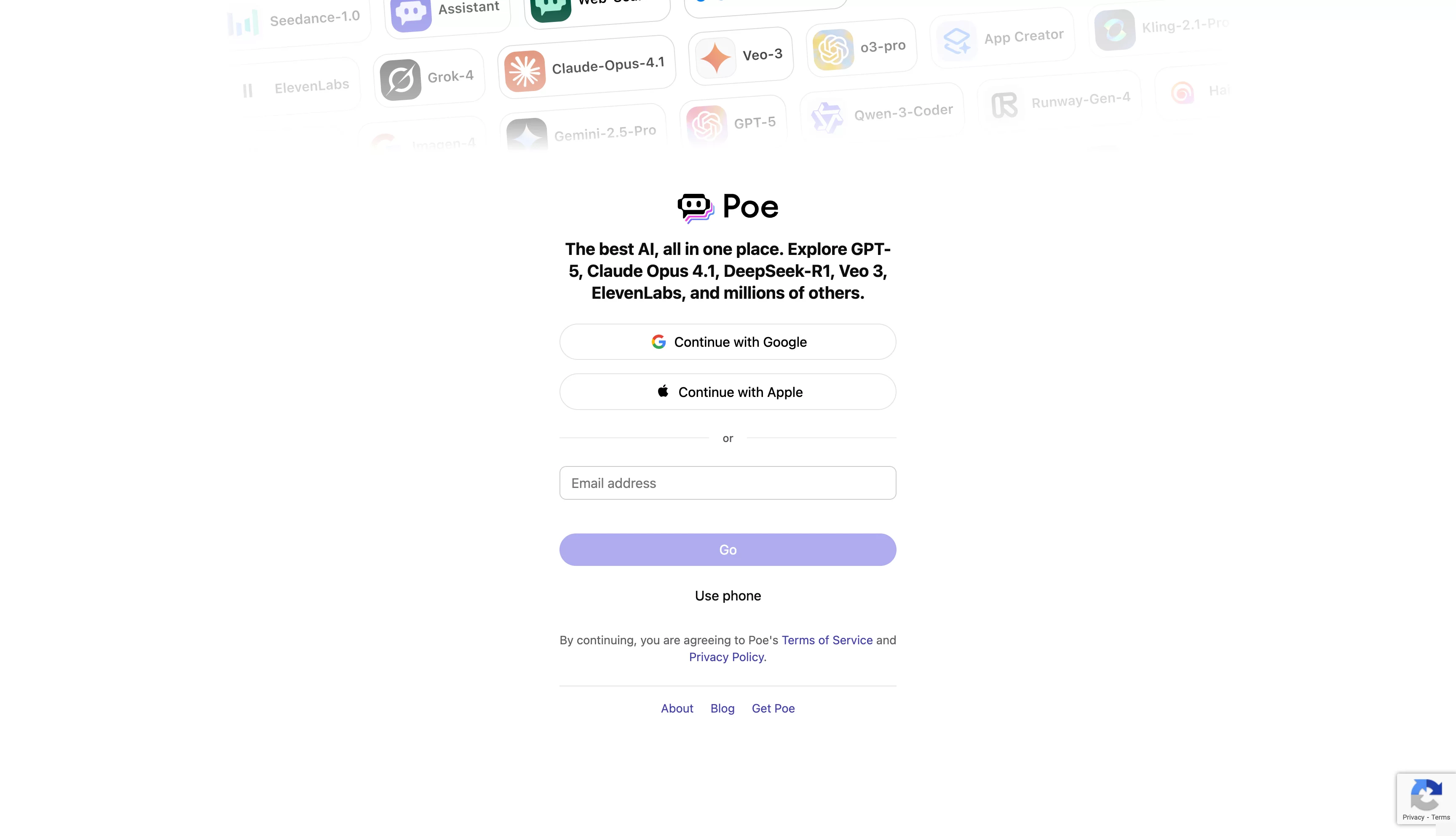
You can even create your own custom bot on Poe, set its system instructions, and monetize it through their creator program — similar to a chatbot marketplace.
Pros:
Access to many AI models
Easy to compare responses
Creator monetization available
Cons:
Credit-based usage
Less depth in branding or analytics
6. Outchat
Best for: Creators, businesses, and professionals building branded AI chats
Model: OpenAI GPT-5 and other leading models
Price: Free with optional credits
Outchat is where creators and businesses go from using AI to owning it.
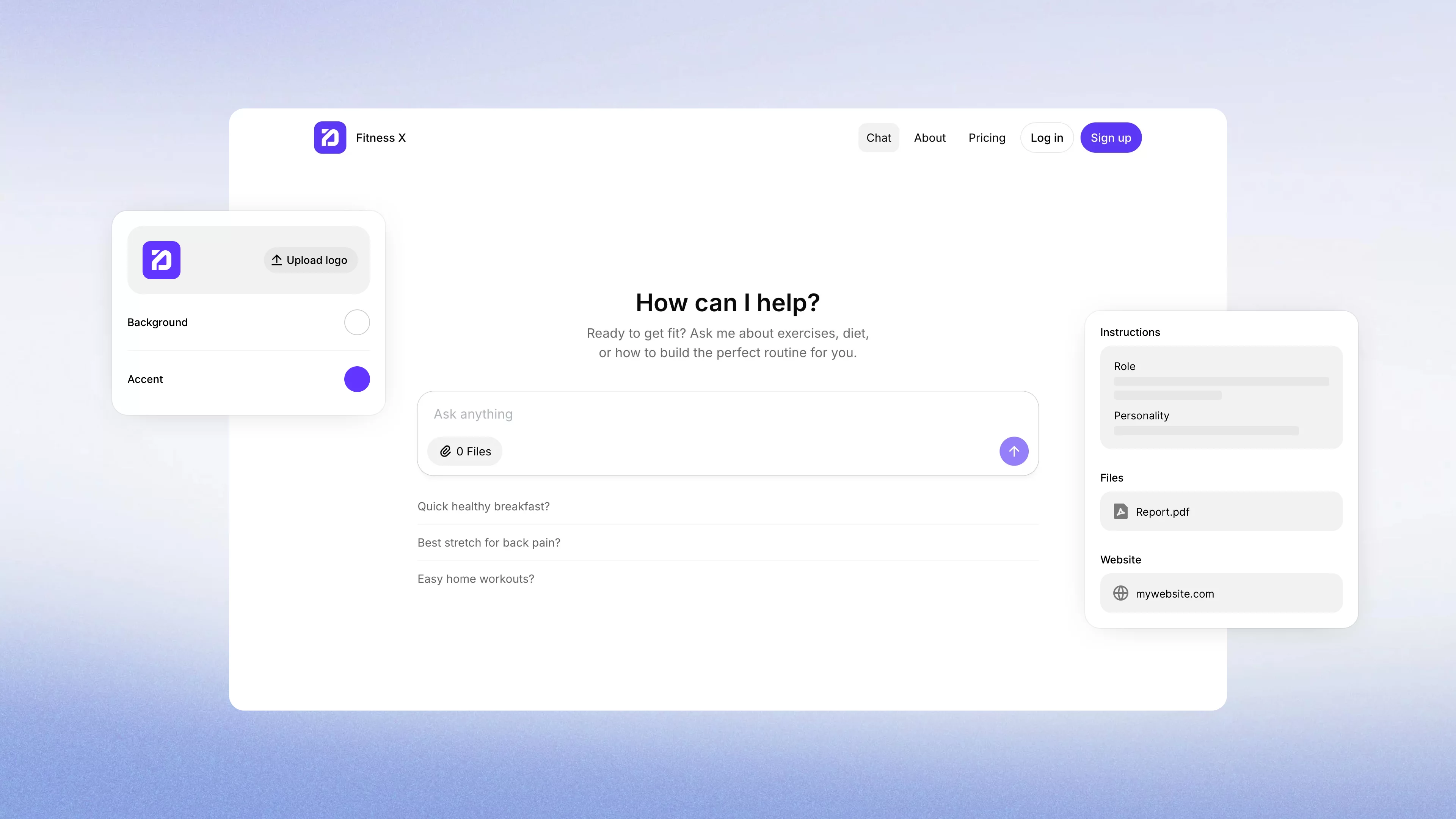
This no-code platform lets you create your own branded AI chatbot trained on your content — website, PDFs, or files — and even monetize it through Stripe integration. It’s like having your personal ChatGPT that matches your brand voice and generates income.
Key features:
Train chatbot on your own data and tone
Customize design, logo, and color scheme
Add chat link or embed widget on your site
Charge users per message, pack, or subscription
Integrates payments via Stripe
Analytics and performance tracking built in
Pros:
No coding required
Built-in monetization
White-label experience (custom domains & “Made in Outchat” removable in paid plans)
Great for coaches, educators, consultants, and creators
Cons:
Newer tool, still expanding enterprise features
Less suitable for large dev teams needing API-level control
If you’ve ever thought, “I wish I could sell access to my own version of ChatGPT,” — Outchat makes that possible. Learn more: outchat.ai/help/introduction
7. Perplexity
Best for: Deep web research and verified answers
Models: OpenAI, Claude, and DeepSeek
Price: Free + Pro tier $20/month
Perplexity combines conversational chat with accurate web results. Every answer includes linked citations, making it the go-to tool for researchers, journalists, and fact-checkers.
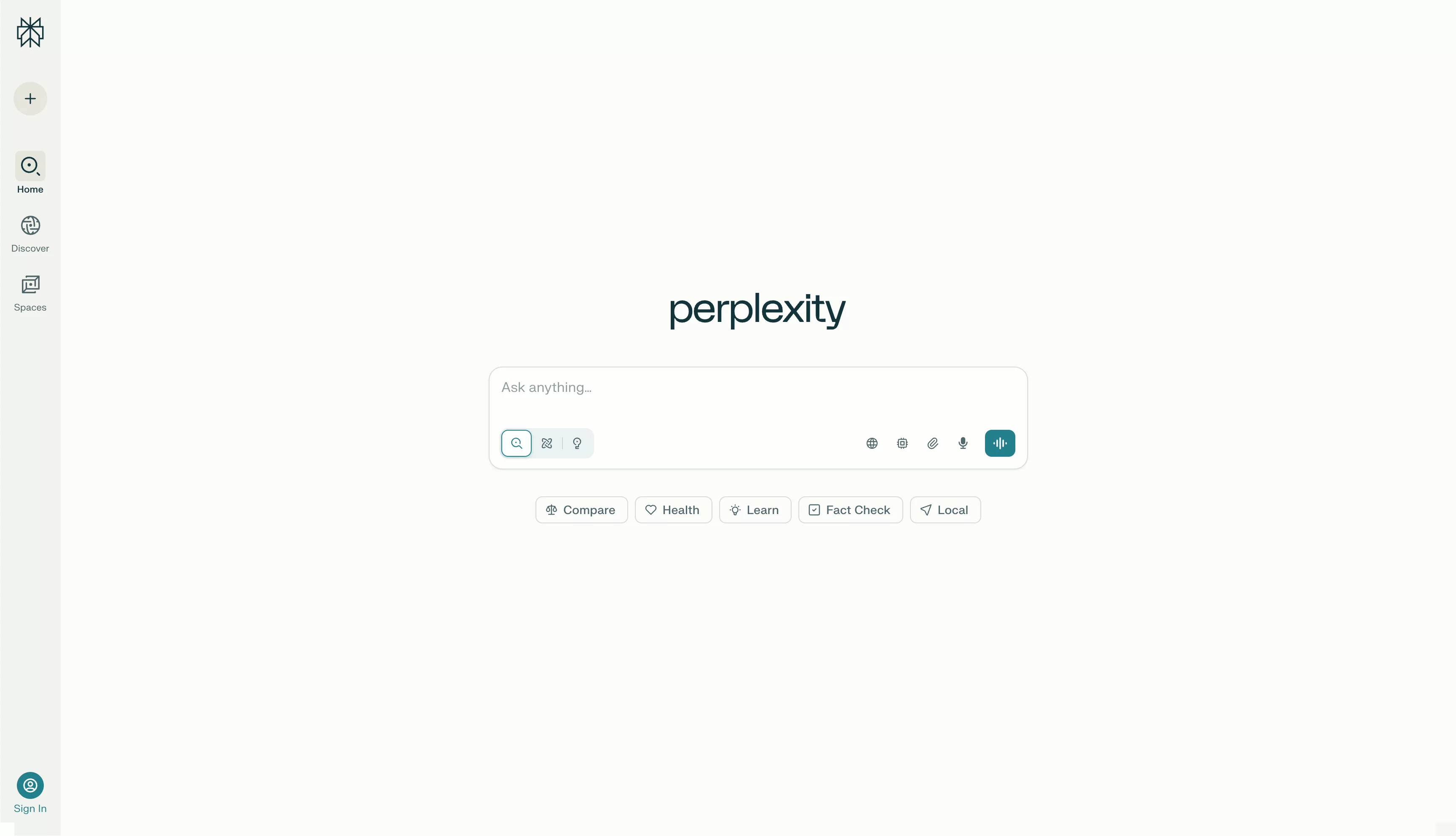
Its Copilot mode asks clarifying questions before answering — refining accuracy — and you can explore topics with follow-up prompts and trending searches.
Pros:
Reliable citations and real sources
Simple UI and fast responses
Great for in-depth queries
Cons:
Limited customization
Occasional redundancy in results
8. Le Chat Mistral
Best for: Simple, free, open-source use
Model: Mistral Large 2
Price: Free
Le Chat Mistral focuses on one thing — lightweight, open-source AI conversation. It’s fast, concise, and privacy-friendly. While it doesn’t have the bells and whistles of ChatGPT or Claude, it’s ideal for users who want simplicity or to experiment with open models.
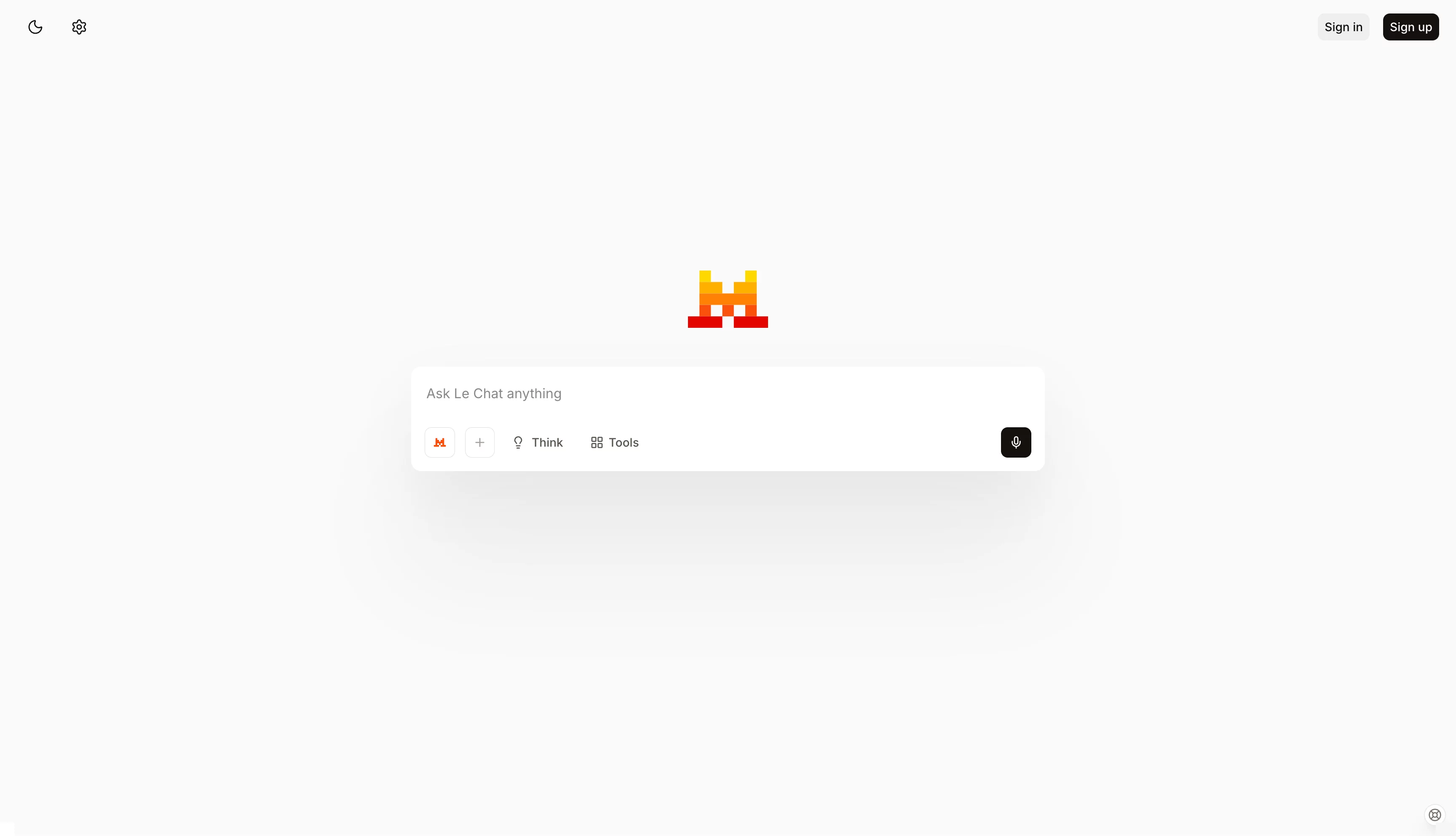
Pros:
Free and privacy-oriented
Supports image understanding
Concise responses
Cons:
Limited advanced features
Lacks long-term memory or integrations
Which Chatbot Is Best for You
If you’re a writer or creative: Claude or ChatGPT
If you’re a researcher or student: Perplexity or Gemini
If you’re an enterprise team: Microsoft Copilot
If you’re a developer or tester: Poe
If you’re a creator or consultant:Outchat (build and monetize your own)
When in doubt, start free, compare answers side by side, and upgrade once you find the one that fits your daily workflow.
Future Trends in AI Chatbots
The AI chatbot landscape in 2025 points toward five major trends:
Multimodal dominance — Chatbots that handle text, voice, image, and video seamlessly.
Personal AI agents — Bots that remember preferences and act proactively.
Open-source innovation — Models like Mistral and DeepSeek fueling competition.
Monetized creators — Platforms like Outchat empowering individuals to sell knowledge.
Regulation & trust — Transparency and privacy will define user loyalty.
By 2026, expect to see AI chat integrated into every digital workflow — from customer support to personal learning and fitness coaching.
How to Build Your Own AI Chatbot (Step-by-Step)
If you want a chatbot that carries your name, tone, and expertise, building one has never been easier.
1. Choose your platform.
Start with Outchat — it’s built for creators and small businesses.
2. Add your content.
Upload PDFs, articles, FAQs, or training files. Outchat trains your AI on that knowledge.
3. Customize the design.
Pick colors, upload your logo, and match your website’s style.
4. Set pricing & payments.
Decide between free chat, one-time paid packs, or subscriptions (Stripe integrated).
5. Embed or share.
Add your chatbot widget to your website, or share your unique Outchat link anywhere.
6. Track performance.
Use built-in analytics to monitor usage, top questions, and conversion rates.
Within an hour, you can launch your own AI assistant — branded, knowledgeable, and profitable.
Final Thoughts
The world of AI chatbots in 2025 is more powerful, competitive, and exciting than ever.
From ChatGPT’s industry dominance to Outchat’s creator-first approach, there’s a chatbot for every goal — whether that’s improving productivity, scaling business workflows, or monetizing expertise.
The key is choosing the right balance between capability, cost, and control.